For the next several weeks, we’ll look at report cards from around the world.
 ~ Here we come! ~
~ Here we come! ~
~ 9th Stop ~ Thailand ~
.
.
Thailand is a popular tourist destination as well as a popular expat post. As a newly industrialized country, Thailand has a lot to offer in terms of modern commodities, as well as a rich history and culture. Thailand has a developed educational system and a high level of literacy. Education is compulsory until Grade 9 and free to Grade 12.
.
- Type of School: British Standard International School
- Academic Year: 1994-1995
- Year: 4
.
.
Here’s the report card! The blue numbers highlight a few interesting aspects of the report and the numbers correspond to notes below the image.
1. Reading, Written Language, Maths… and Thai!
This school incorporates the local language as a mandatory subject. Courses include reading, written language, maths, topic (though the actual topic isn’t written), P.E. (physical education), art, music, computer and Thai.
2. Good job Son, I think you got a, um… a 1 in Thai Class
The box at the top of the report card says “Marking Symbols Reflect Achievement Only.” Using this statement, paired with the smaller-than-small “marking symbols” (numerical grades – 1 stands for excellent, 2 for good, 3 for satisfactory, etc.), parents can safely assume the comments hold more weight than the number grades.
3. Comments, comments and more comments
This report card has plenty of room reserved from comments from the teachers, allowing the parents to get a good sense of their child as a student.
4. Grade for Courses… and Study Skills
Along with grades for the courses, students receive grades and comments for the Work and Study Skills they should be picking up. Skills include “works independently,” “works well with others,” “participates in class,” “follows directions and rules” and “attitude.”
See Report Card from: Ontario, Canada; Mexico City, Mexico; Zomba, Malawi; Sydney, Australia, week 1; Sydney, Australia, week 2; Dalhousie, India; Kathmandu, Nepal; Soro, Denmark
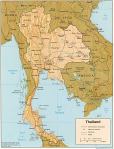
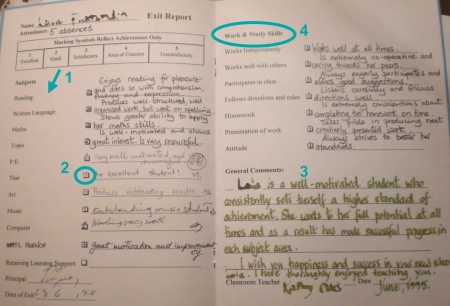



 Posted by findingschools
Posted by findingschools 



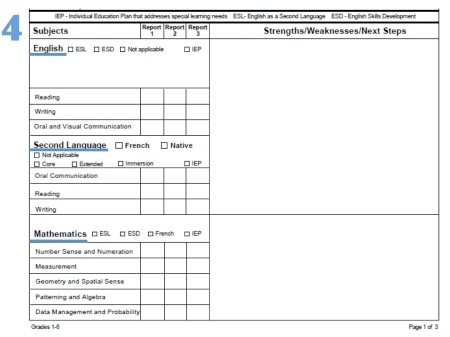

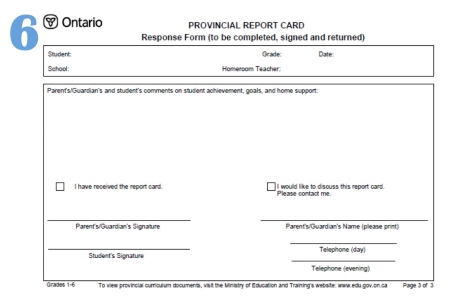


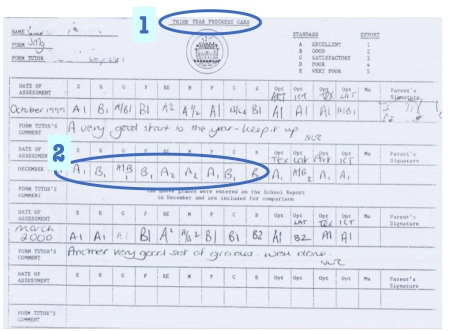
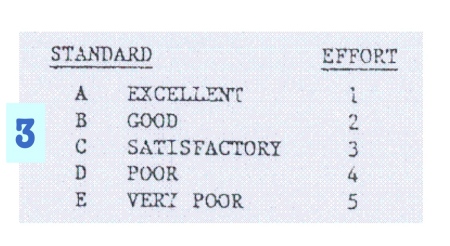


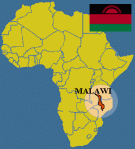 Report Card Basics
Report Card Basics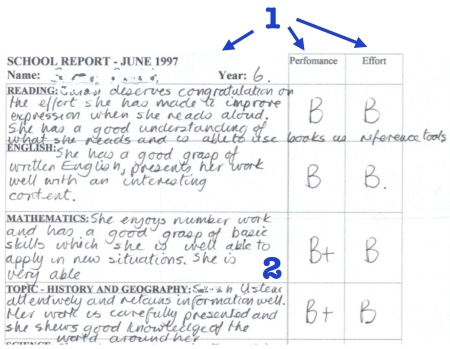
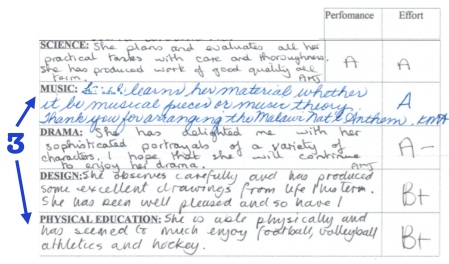 3. It’s a Matter of Effort!
3. It’s a Matter of Effort! 4. On a Personal Note…
4. On a Personal Note…
 Report Card Basics
Report Card Basics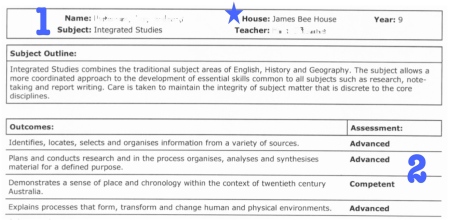
 A British concept, the
A British concept, the 
 4. PDHPE ~ Personal Development, Health and Physical Education
4. PDHPE ~ Personal Development, Health and Physical Education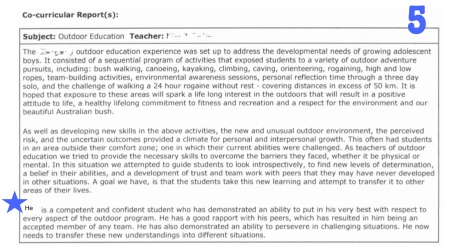 5. A Modern Walkabout
5. A Modern Walkabout 6. I believe I have done quite well… I might have been able to do a little better if I had studied more, but not by much.
6. I believe I have done quite well… I might have been able to do a little better if I had studied more, but not by much.
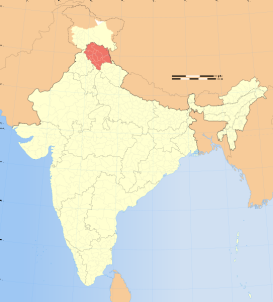
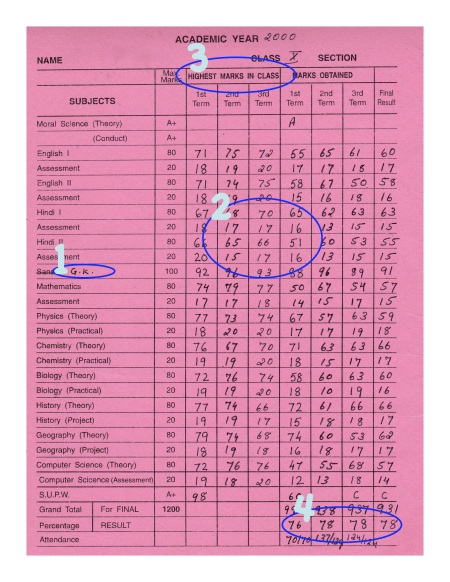



Report Cards from Around the World: Sydney, Australia
October 23, 2009~ Hold on to your hats! ~
~ Fourth Stop ~ Sydney ~
.
.
Student Report Basics
Here’s the report card! The blue numbers highlight a few interesting aspects of the report and the numbers correspond to notes below the image.
1. Descriptions, Definitions and Instructions
Unlike any other report card we have seen so far, this evaluation is 11 pages long (for instance, the report cards from Dalhousie and Kathmandu are two pages and consist primarily of numbers, rather than words). While many other educational systems attempt to summarize a year’s worth of work into a page or two, this report card include descriptions of the child’s performance, definitions of expected “outcomes” and provides the parents with instructions for interpreting the report card. (Note that this is the first Elementary School report card we have analyzed). Parents, grab a cup of coffee and find a comfy seat, this might take a while!
2. Key Learning Areas determined by the New South Wales Board of Studies
Australians base the educational system and curriculum on Key Learning Areas, which consist of English; mathematics; science and technology; the arts; health and physical education; and study of human society and its environment, which includes languages other than English. The Key Learning Areas and “outcomes and guidelines for indicators” demonstrate the government’s involvement in upholding a certain standard of education.
3. Children are Different
“Children can have different learning needs and may be working towards outcomes at an earlier or later stage.” Translation ~ parents, don’t worry if you’re child is ahead in some areas and behind in others!
.
4. Progress on a Scale!
These scales show this student’s progress for the areas of English and Mathematics. This student has reached the targeted outcomes for Grade 2 (which is the second year of Stage 1), and is ready to begin Grade 3. This visual representation of progress is a relatively unique aspect to report cards!
.
5. English and Mathematics… whole numbers, volume, time, chance…
About 5 pages are dedicated to English and Mathematics and each area is broken down to the subsections listed below.
English
Mathematics
6. Your child is Competent… Developing… Needs Support…
Each area listed above includes a list of “indicators.” The teacher then marks the child’s achievement for each indicator as competent, developing or needs support. Note that these categories are stated in the positive form of the meaning (rather than, “is behind the rest of the class”). For instance, in writing, this child:
Consider how this differs from JUST a letter or number grade for mathematics in general; in comparison to all the information provided, the letter or number illustrates only the child’s standing in relation to the other students in the class. This process explains the child’s progress in relation to each task.
.
7. Social Development… at a 2nd grade level
Besides English and mathematics, students receive an assessment for Religious Education, Science and Technology, Human Society and Its Environment, Creative Arts (Music, Visual Arts, Drama) and Health and Physical Education. Teachers also assess Social Development and Work Habits. Looks like this student is “developing well” in some areas and is “highly developed” in others. Well done!
.
8. General Comments
This section allows the teacher to comment on the child’s social and academic development, noting areas that may need attention.
.
See Report Card from Dalhousie, India; Kathmandu, Nepal; Soro, Denmark
Report card analysis to look forward to: Palestine, Malawi, Australia, Canada, Mexico and more!